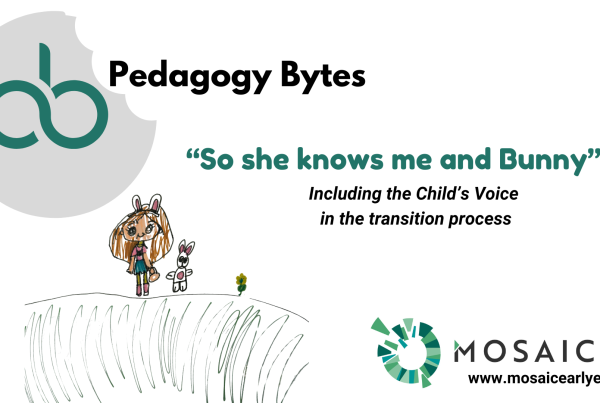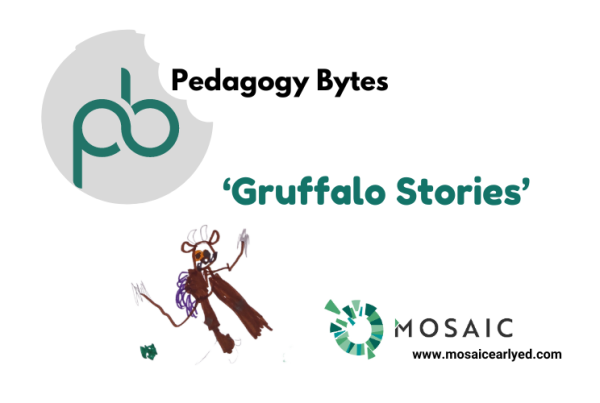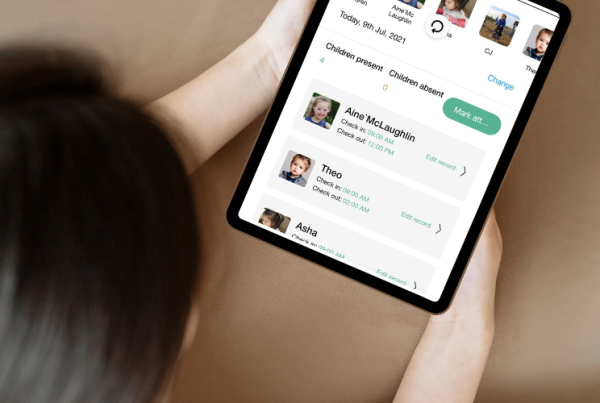The technique for compiling learning stories is made simple through the Mosaic Educator platform. However, to maximise two-way engagement with parents, learning stories need to be engaging, easy to understand and informative. Below are some practical tips for you and your team to make your learning stories appealing to parents.
1. Create a Unique Title
Grab their attention. Draw parents in. You want them to read the story. Make them want to read on. A unique title should be personal to the child, relate to the learning story or represent the child’s exact words. Remember, when writing learning stories, you don’t have to write the title first. Put the pictures and text together and the title might leap off the page at you.
2. Make Learning Stories Personal
The best learning stories are ones that make parents feel you connect with their child.
If you can’t make the learning story personal, about the child, or that family, it makes it hard to write an engaging story. Having regular conversations with parents are helpful to discover what’s happening at home, interests which will weave themselves into your observations and stories. Jack has a huge collection of zoo animal toys at home…there’s an interest right there…
But how do you make the writing personal? Be specific. It’s no secret that every child is different. Every child shows interest in different things at different stages. Closely observing the child’s learning is key, and for educators, allowing yourself time to stand back and observe, provides opportunities for stories.
3. Choose Photos that Tell a Story
Mosaic is an online portfolio so it allows you to match a learning story or quick update with pictures that “speak volumes”. In general, if you choose carefully, 3-5 photos without any words can highlight an entire story. Busy parents look at photos first, so it is important to choose good photos.
Remember, not every story needs detailed observations. Educators are reporting that the number of stories per child is increasing since using Mosaic. This is because of the different templates available to you – from a quick picture story to a longer learning story. So, brief and concise picture/voice stories will complement more detailed learning stories and snapshot reviews.
4. Find Your “Voice” In Your Learning Stories
Every story you write will be different (because every child is different) – but the consistent thing is you writing them. It’s your voice, your passion for early education and your enthusiasm and pride in the child’s learning growth being described that makes the story come alive for parents. They love that you love seeing progress, so wear it proudly.
Make your language positive and engaging. Learning stories are about what a child is trying to do – It’s the “learning” in the learning story that provides the key.
5. Learning Stories don’t have to be Perfect
Not every learning story you write has to be perfection- it has to be real. Lack of time is always a consideration for busy early childhood educators. Sending the story to a family who loves seeing how their child spends their day is important.
Seeing something ‘now’ – in real time, has huge impact. Rewriting a learning story over and over again won’t always make it better and the time delay will lose impact for parents. Of course, if there’s time, get one of your colleagues to have a quick read. A second reader can offer suggestions for improving your story. Or they can reassure you that your story is great!
6. Prompt Parents to Engage
By using the child’s voice perspective in ‘You can help be build on this by ..’ actively engages the parent as well as the Educator for the benefit of the child in a partnership approach. For example, ‘Provide me with …’, Help me to …, ‘Tell me about …’ are all child’s voice prompts to invite adults to support the child to build on skills and learning.
7. Send Stories in Real Time!
Before MOSAIC it was common for many parents of preschool children to receive a hard copy portfolio/scrapbook” of their child’s learning stories, photos and artwork at the end of a term/year. It was a great read, but much of the learning happened 4-6 months ago or longer. This period is too long for meaningful learning partnerships with parents.
Parents who wanted to contribute felt too much time had passed and often the child had moved on to other interests. But if you get the learning stories to the parents while the child’s learning is still current, parents will be more likely to take an active role in their children’s learning.




